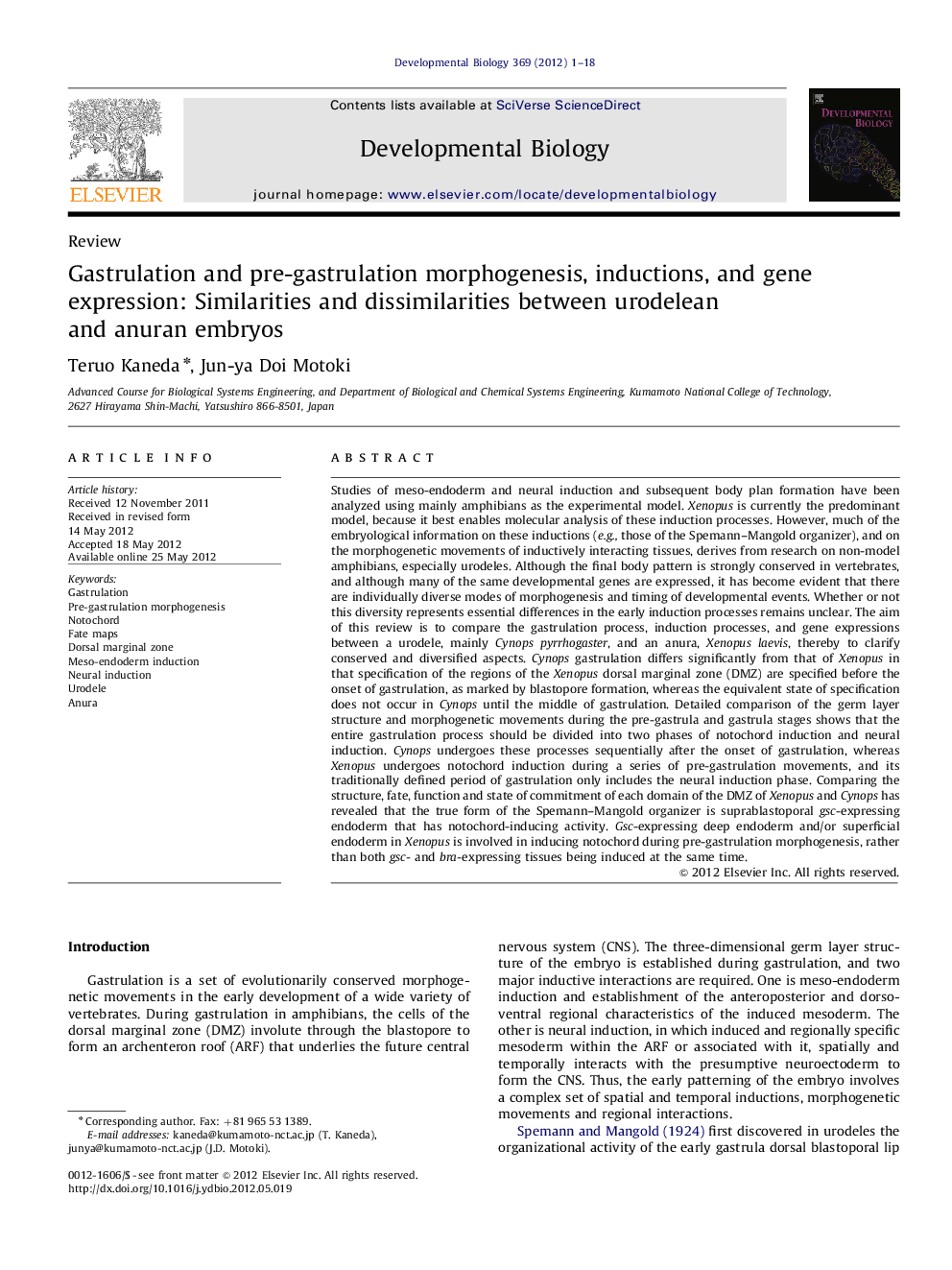| کد مقاله | کد نشریه | سال انتشار | مقاله انگلیسی | نسخه تمام متن |
|---|---|---|---|---|
| 2173296 | 1093710 | 2012 | 18 صفحه PDF | دانلود رایگان |

Studies of meso-endoderm and neural induction and subsequent body plan formation have been analyzed using mainly amphibians as the experimental model. Xenopus is currently the predominant model, because it best enables molecular analysis of these induction processes. However, much of the embryological information on these inductions (e.g., those of the Spemann–Mangold organizer), and on the morphogenetic movements of inductively interacting tissues, derives from research on non-model amphibians, especially urodeles. Although the final body pattern is strongly conserved in vertebrates, and although many of the same developmental genes are expressed, it has become evident that there are individually diverse modes of morphogenesis and timing of developmental events. Whether or not this diversity represents essential differences in the early induction processes remains unclear. The aim of this review is to compare the gastrulation process, induction processes, and gene expressions between a urodele, mainly Cynops pyrrhogaster, and an anura, Xenopus laevis, thereby to clarify conserved and diversified aspects. Cynops gastrulation differs significantly from that of Xenopus in that specification of the regions of the Xenopus dorsal marginal zone (DMZ) are specified before the onset of gastrulation, as marked by blastopore formation, whereas the equivalent state of specification does not occur in Cynops until the middle of gastrulation. Detailed comparison of the germ layer structure and morphogenetic movements during the pre-gastrula and gastrula stages shows that the entire gastrulation process should be divided into two phases of notochord induction and neural induction. Cynops undergoes these processes sequentially after the onset of gastrulation, whereas Xenopus undergoes notochord induction during a series of pre-gastrulation movements, and its traditionally defined period of gastrulation only includes the neural induction phase. Comparing the structure, fate, function and state of commitment of each domain of the DMZ of Xenopus and Cynops has revealed that the true form of the Spemann–Mangold organizer is suprablastoporal gsc-expressing endoderm that has notochord-inducing activity. Gsc-expressing deep endoderm and/or superficial endoderm in Xenopus is involved in inducing notochord during pre-gastrulation morphogenesis, rather than both gsc- and bra-expressing tissues being induced at the same time.
Journal: Developmental Biology - Volume 369, Issue 1, 1 September 2012, Pages 1–18